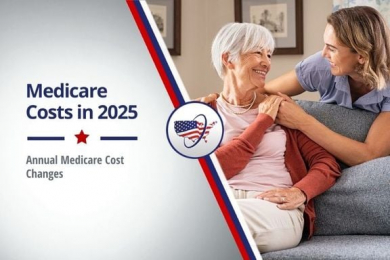Prescription Drug Price Controls Won’t Make the State of our Union, Or Your Healthcare, Stronger
President Biden declared in last week’s State of the Union speech that he was going to lower prescription drug prices. It has become a mantra echoed over the years by Democrats and Republicans alike. It is important to note that each of the approaches that have been proposed for lowering drug prices involves inserting the government into the Part D Prescription drug program. If you haven’t already deduced from my earlier blogs, you need to know that I’m an ardent fan of keeping the government out of our lives and especially out of our healthcare. Having said that, I also recognize that the free market has its limitations when it comes to healthcare. For instance, if I didn’t like the heart transplant I got last week I can’t just go to a different doctor or hospital for this week’s heart transplant. Some aspects of the free market don’t work when it comes to healthcare. There are places where government oversight is needed to set guardrails and to ensure the safety and accessibility of our healthcare. The very inception of Medicare Part D is a great example of this balance of the free market and government oversight.
If you turned 65 less than 15 years ago you may not realize that Part D was not always a part of Medicare. When Medicare was first implemented, the number of prescription drugs available was very small compared to those available today. It wasn’t considered necessary in 1965. By 2003, it was evident that prescription drugs were an important part of our healthcare and it needed to become part of our Medicare benefit. The debate over how this new benefit would be administered ranged from those who wanted to have a government run program, they even estimated what a government-controlled Part D approach would cost, to those who wanted the government to issue vouchers to beneficiaries that could be used to purchase prescription drug coverage from commercial insurers. It quickly became evident that neither of these approaches had the votes to pass so the search for a compromise approach began.
The side that wanted more government control of the process worried that there wouldn’t be enough insurers offering plans, especially in rural areas. Their solution was to create more regulations that would force levels of insurer participation and to propose a fallback approach that, if no plans were offered in a particular area, a government-based Medicare plan would be offered.
The side that wanted less government intervention pushed for the ability for private insurers to contract with Medicare to offer prescription drug plans in specific areas and compete with other commercial plans for customers. To ensure free competition, an explicit non-interference cause was to be included in the law, prohibiting the government from influencing or directing drug prices, letting the competition drive the premium prices.
After much discussion, the Part D program we have now was narrowly passed at 3:30 am. It took over 2 years to prepare for the benefit roll out, with Part D being fully implemented in 2006. The resulting law was a public/private partnership that included the non-interference clause and the provision to offer a Medicare sponsored plan if no commercial insurance plan was offered in an area. This is what has happened over the last 15 plus years.
- Montana, a very rural state, has 23 Part D plans to choose from; it was never necessary to implement the Medicare based plans.
- Premiums have grown slower than the consumer price index.
- Part D costs are 40% less than what was estimated for a government-controlled solution.
The point I want to make is that, in this particular area of healthcare, keeping the non-interference clause in the law worked.
There have been many drug price solutions proposed:
- Drug negotiations – This would allow the government to essentially set drug prices.
- Drug importation – Allow states to import drugs from foreign countries, primarily through Canada.
- Limit drug prices – Base drug prices on those of a select group of foreign countries.
- Limit existing drug price increases – Using the Consumer Price Index (an inflation indicator) the government will limit the amount certain drug prices could be increased.
- Change the prescription drug rebate process – Push rebate savings to the patient at the pharmacy counter.
- Change Part D to operate like the VA drug program functions – It would mimic the government-run VA drug program which has about half of Part D’s formulary and sets price discounts.
Every one of the proposed “fixes” to drug prices involved government intervention with none of these solutions having any history of working. We have 15 years of history of proof that non-interference works. The Part D program has an almost 90% favorable rating among its users. We don’t know need to revert to an untested government-controlled prescription drug program.
Do we need to improve the Part D program? Yes! The business model and pricing mechanism is convoluted and inefficient. We need ways to reduce and/or cap the out-of-pocket prescription drug costs. There are solutions that can lower your prescription drug costs while continuing to encourage the discovery of life changing and life savings drugs. We need to all get together and work toward these solutions. Government setting the price of prescription drugs is not the solution.
This month Seniors Speak Out is focused on discussing drug prices. Our first step is to hear from you. We’d ask that you to click here and take a brief survey so you can tell us what your concerns are. You can then tune in on Facebook live, on March 24th, where former Speaker of the U.S. House of Representatives Newt Gingrich and I will discuss the survey results and drug pricing. We’ll give details on how to tune in to the Facebook live discussion on my blogs later this month.
We look forward to hearing your thoughts.
Best, Thair
Editor’s Note: Today’s guest column on the potential for a “business bonanza” in 2025 comes from Manward Press Chief…
Copyright © 2025 Retiring & Happy. All rights reserved.








